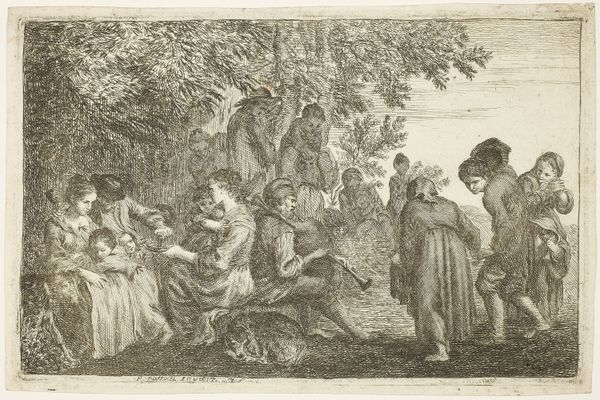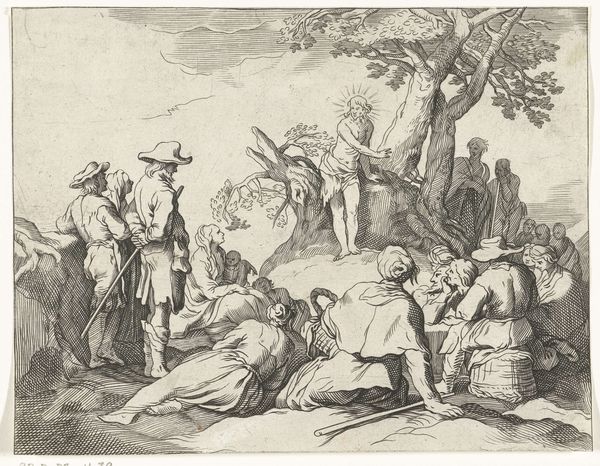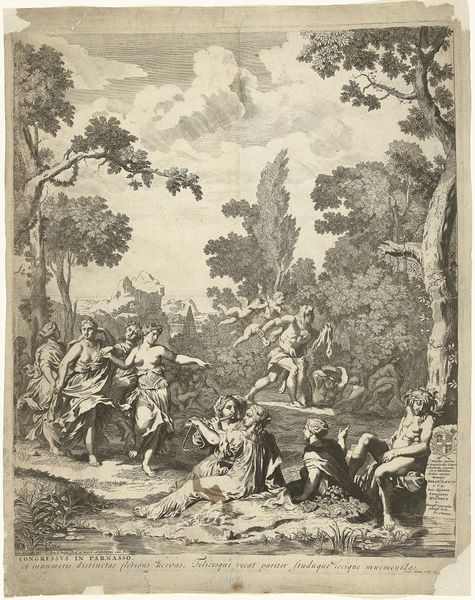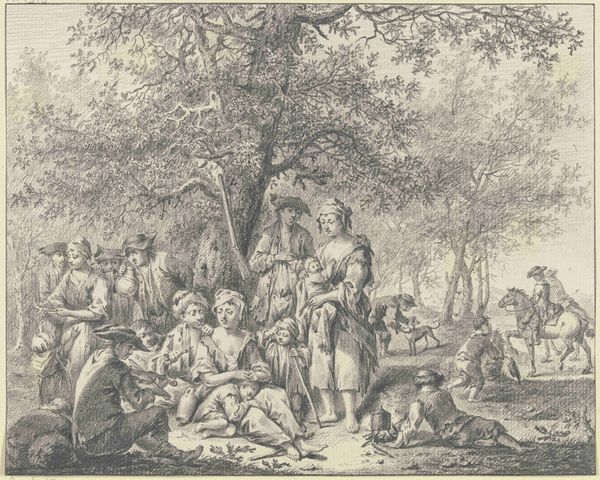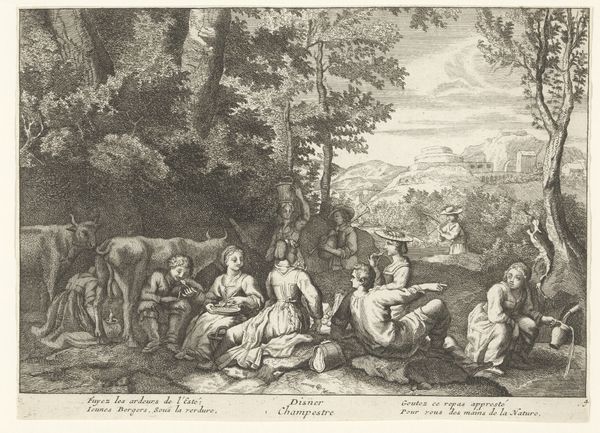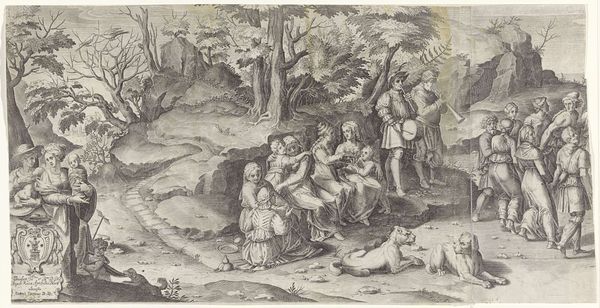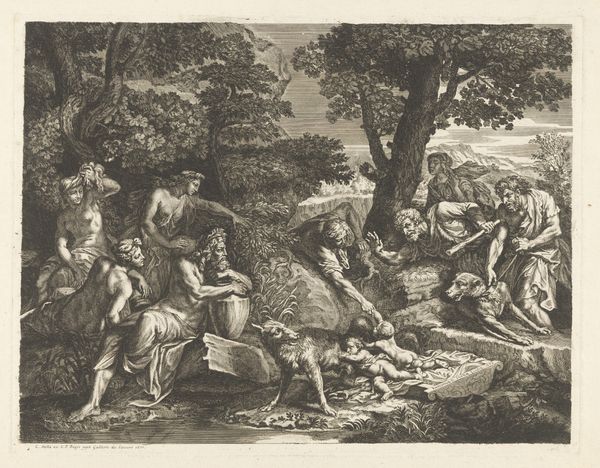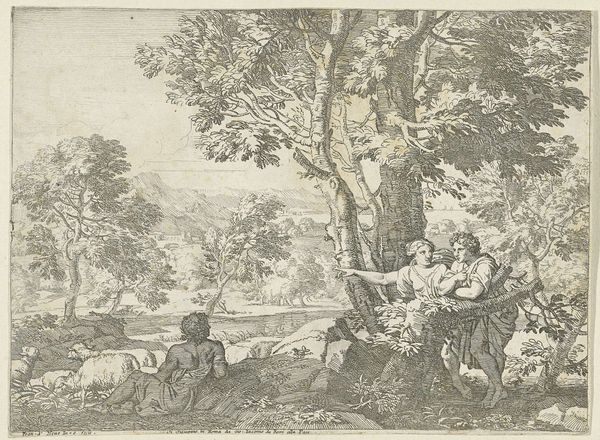
engraving
#
baroque
#
landscape
#
figuration
#
history-painting
#
engraving
Dimensions: height 401 mm, width 582 mm
Copyright: Rijks Museum: Open Domain
Curator: "Landschap met bacchanten," or "Landscape with Bacchants," crafted in 1685 by Franz Ertinger. A feast for the eyes. What catches your attention? Editor: There's a certain languid air to it, wouldn’t you say? The figures seem relaxed, almost lost in their revelry. The chiaroscuro is striking too, enhancing the volume. Curator: Absolutely, and observe the engraver's hand. Every line suggests a story of artisanal labor—etching and inking, the physicality of plate production and printing—all for wider consumption. It’s no mere image; it’s a testament to the industry that surrounded art creation at the time. Editor: Quite. Beyond the process, the formal elements create a harmonious balance. The composition cleverly guides your eye. Note how the landscape serves as a backdrop for this dynamic, almost theatrical grouping of figures. The figures aren't just scattered. It's cleverly arranged. Curator: This links back to the economic and social forces at play. How these classical motifs are commodified and circulate. We can even trace their influences in tapestries, furniture, and other artisanal crafts of that era. Consider how it reflects the tastes of a rising mercantile class eager to associate with classicism. Editor: Indeed, the image has a certain symmetry to it, broken up with organic elements. This evokes balance and harmony within chaos, even within monochrome. What's not to like? Curator: But that monochrome is significant; it speaks of a dissemination through printed matter, of accessibility. And considering how Ertinger built on compositions by others, the history-painting style, itself, it speaks to cultural dissemination beyond canvas. It suggests how this type of landscape infiltrated ordinary spaces. Editor: A final thought, then. "Landscape with Bacchants" exemplifies how formal strategies and stylistic choices can create compelling, symbolic imagery that stands up to this very day. Curator: And by examining it materially, through its method of production and dissemination, we see the work acting as both art object and economic artifact, a product of its time speaking to broader societal and artistic practices.
Comments
No comments
Be the first to comment and join the conversation on the ultimate creative platform.
